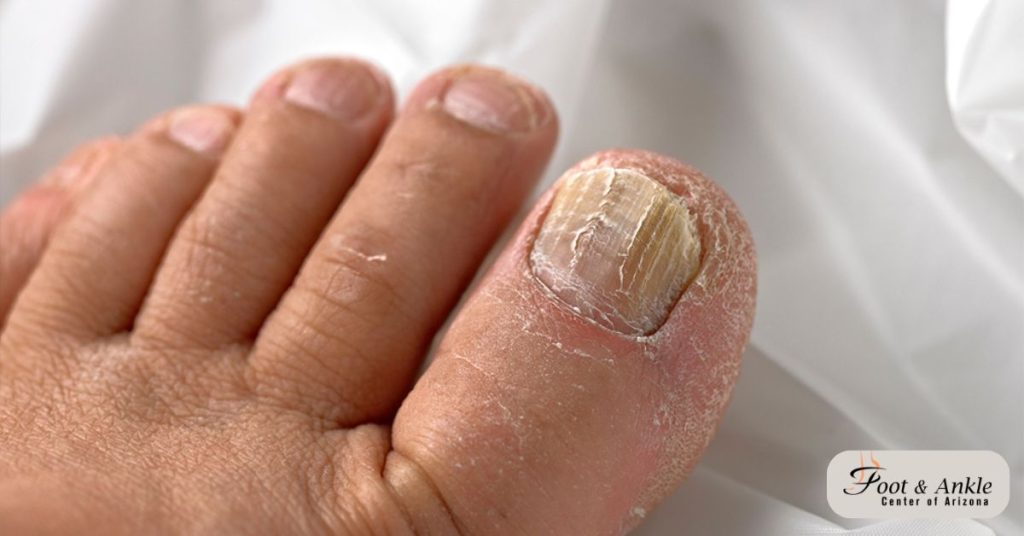How Can I Treat Toenail Fungus: Toenail fungus, medically referred to as onychomycosis, is a commonplace condition that influences thousands and thousands of people worldwide. It happens when fungal organisms invade the toenail, leading to discoloration, thickening, and now and then crumbling of the nail. While often no longer painful inside the early stages, untreated toenail fungus can progress and cause discomfort or more excessive complications.
Toenail Fungus
Toenail fungus flourishes in heat and wet environments such as sweaty shoes or damp socks. It normally starts as a small white or yellow spot beneath the nail and might spread deeper into the nail if now not treated promptly. Factors along with negative foot hygiene, carrying tight-becoming shoes, strolling barefoot in public places like pools or gyms. And having a weakened immune device can increase the threat of developing toenail fungus.
Symptoms of Toenail Fungus
Identifying toenail fungus early is crucial for effective remedy. Common signs consist of:
- Discoloration: Yellow, white, or brown discoloration of the nail.
- Thickened nails: Nails may additionally come to be thicker or distorted in shape.
- Brittle or crumbly nails: Nails may break without difficulty or fall apart at the rims.
- Distorted form: Nails may additionally emerge as misshapen or abnormal.
If left untreated, toenail fungus can unfold to different nails or maybe to other elements of the body, leading to greater health worries.
Treatment Options
Treating toenail fungus may be hard, frequently requiring endurance and an aggregate of procedures. Here are several effective remedy options:
1. Topical Antifungal Medications:
You can apply over-the-counter and prescription-strength antifungal creams, ointments, or nail lacquers to the affected nail at once. These medications work by penetrating the nail to target the fungal infection.
2. Oral Antifungal Medications:
In cases of intense or persistent toenail fungus, oral antifungal medicinal drugs prescribed via a healthcare issuer can be important. These medications are taken for several weeks or months and paintings via attacking the fungus from inside.
3. Laser Treatment:
Laser therapy is an especially more recent treatment choice that makes use of a focused laser mild to kill the fungi infecting the nail without harming surrounding tissue. This remedy is regularly short and may require multiple classes for foremost outcomes.
4. Surgical Treatment:
In rare cases in which toenail fungus is severe or causes giant pain or discomfort, surgical elimination of the nail can be taken into consideration. This manner allows for direct treatment of the nail bed and might prevent the fungus from spreading.
3. Home Remedies and Prevention:
While now not continually a primary remedy, working towards true foot hygiene and taking preventive measures can help manage and decrease the threat of toenail fungus. These encompass maintaining ft clean and dry, wearing moisture-wicking socks, warding off walking barefoot in public places, and often trimming nails straight across.
Consultation with a Podiatrist
To achieve a correct diagnosis and develop a personalized treatment plan, you should consult with a podiatrist or healthcare provider who focuses on foot and nail care. They can assess the severity of the infection, advocate appropriate treatments. And offer guidance on preventive measures to lessen the chance of recurrence.
FAQs
What exactly is toenail fungus, and how do people get it?
Toenail fungus happens when fungus gets under your nail, usually because of damp places like sweaty shoes, gyms, or pools. Things like wearing tight shoes and a weak immune system can make it easier to catch.
How can I know if I have toenail fungus?
Look for yellow, white, or brown spots, thick or brittle nails, or a funky shape. Catching it early can make it way easier to treat!
What are the main ways to treat toenail fungus?
You’ve got options! Try over-the-counter creams, doctor-prescribed pills, laser treatments, or, if it’s really bad, surgical removal of the nail.
Do any home remedies help with toenail fungus?
Home remedies might help slow it down or keep it from spreading, but they usually aren’t enough on their own. It’s a good idea to check with a doctor.
When should I think about seeing a podiatrist?
If it’s not getting better or is getting worse, a podiatrist can suggest stronger treatments and give you tips to avoid future problems.
Conclusion
Although toenail fungus may be cussed and hard to treat. Effective alternatives are to be had to manage and eradicate the infection. Early detection, set-off treatment. And consistent preventive care are key to keeping healthy nails and preventing the spread of toenail fungus. By knowledge of the symptoms, remedy alternatives, and preventive measures, individuals can take proactive steps toward accomplishing clear and healthful nails.
If you think you can have toenail fungus or have worries approximately your foot health, contact the Foot and Ankle Center of Arizona these days. Our expert team is dedicated to supplying complete care and powerful treatments tailored to your needs.




